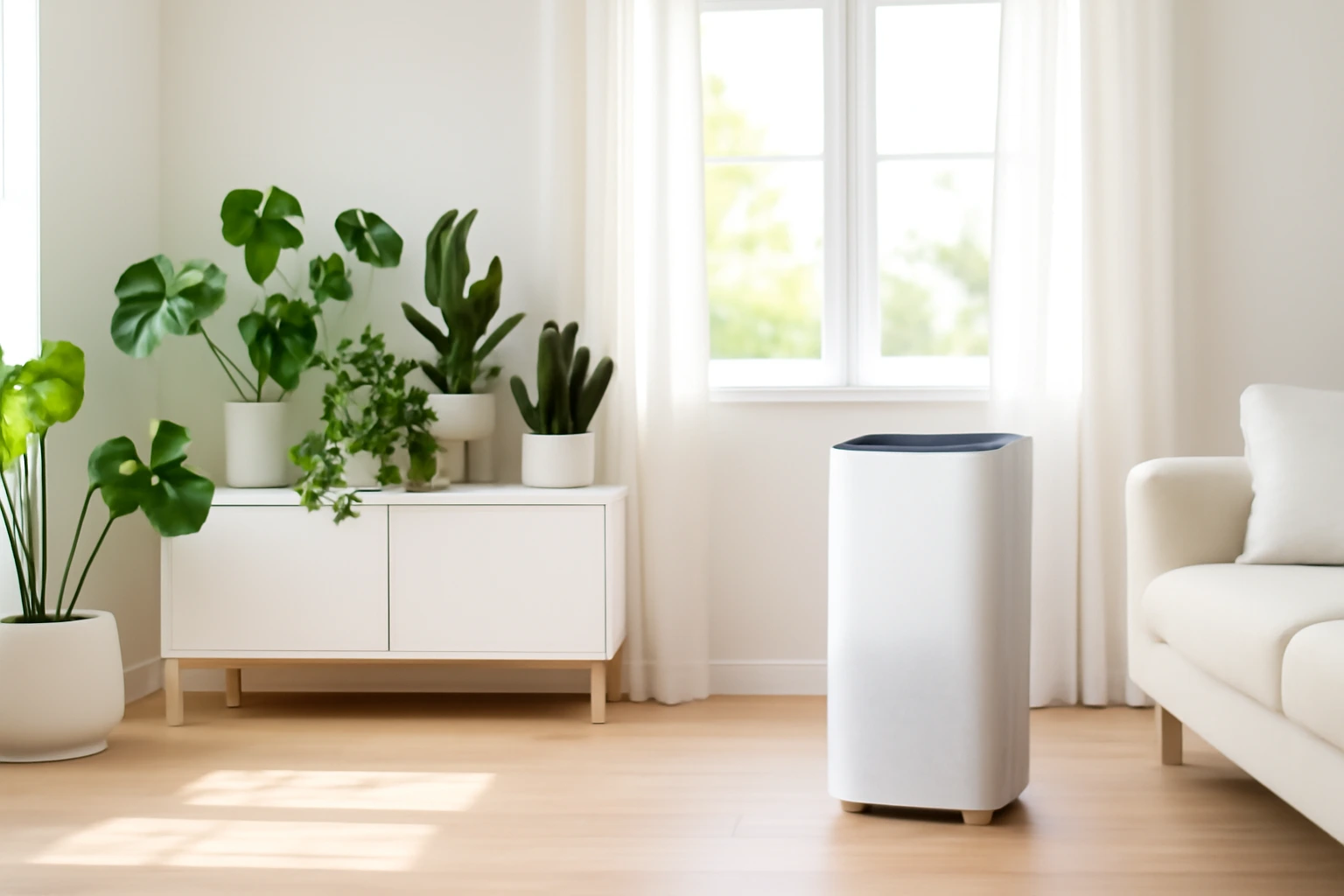Indoor air quality is a growing concern as we spend much of our time indoors, surrounded by potential pollutants such as dust, volatile organic compounds (VOCs), allergens, and microbes. Wondering whether indoor plants or air purifiers work better to clean your home’s air? Many people consider adding indoor plants or investing in air purifiers, but which option truly improves the air you breathe? This article dives deep into the effectiveness of indoor plants and air purifiers to help you make an informed decision.
The Science Behind Indoor Plants and Air Purification
Indoor plants have long been popular as natural air enhancers. The belief stems from a landmark 1989 NASA study that showed certain houseplants could absorb VOCs like formaldehyde and benzene in sealed chambers. It found that plants like spider plants, peace lilies, and golden pothos could remove indoor air pollutants through their leaves and root microbes.
However, the controlled environment of that study—sealed chambers with constant light, temperature, and humidity—does not reflect typical indoor conditions. More recent research shows that in average homes or offices, air constantly circulates with outdoor air, diluting the plants’ ability to purify effectively. To achieve measurable purification in a room, one would need 10 to 1,000 plants per square meter—equating to hundreds or thousands of plants per typical home—making it highly impractical.
Moreover, plants’ oxygen production only happens during the day under sufficient light, and at night, they can even release carbon dioxide, which complicates their role in maintaining air quality round-the-clock.
Also read: Hollong Tree: The Majestic State Tree of Assam and Arunachal Pradesh
Practical Takeaway for Indoor Plants
While plants have limited practical air purification capacity, they do offer benefits such as:
- Improving indoor humidity levels
- Adding aesthetic appeal that can boost mood and reduce stress
- Creating a connection to nature inside your home
So, plants are great for enhancing your environment but cannot replace serious air filtration when it comes to cleaning indoor air pollutants effectively.
How Air Purifiers Work and Their Effectiveness
Air purifiers are devices specifically designed to reduce airborne pollution quickly and efficiently. Modern air purifiers use HEPA filters, activated carbon filters, or advanced technologies like PECO (Photo Electrochemical Oxidation) to remove or destroy:
- Dust, pollen, pet dander
- Smoke particles
- Volatile organic compounds (VOCs)
- Bacteria, viruses, and mold spores
- Odors and chemical gases
Air purifiers operate by circulating indoor air multiple times per hour, filtering out up to 99.97% of particles as small as 0.3 microns, which includes many allergens and pollutants invisible to the naked eye.
Comparison of Air Purifiers to Plants
- Speed and Efficiency: Air purifiers clean air within minutes to hours, while plants take weeks or months to make any small impact.
- Coverage: A single purifier can effectively clean the air in rooms from 250 to 1,000 square feet, whereas plants need to be in extremely large numbers with lots of leaf surface to match that.
- Filter Maintenance: Air purifiers require occasional filter changes, whereas plants need daily care including watering, pruning, and pest control.
- Air Quality Impact: Verified by independent lab testing, air purifiers provide immediate measurable improvement, while plants’ air cleaning capacity is minimal in real-world settings.
Which One Should You Choose?
Choosing between indoor plants and air purifiers depends on your goals and lifestyle:
- For effective, measurable air purification—especially if you suffer from allergies, asthma, or live in polluted urban areas—an air purifier is the clear winner.
- For improving decor, boosting mental health, and adding natural humidity, indoor plants are beneficial. They provide stress relief and can enhance your living space’s ambiance.
- The optimal solution? Use both. Combine plants for aesthetic and psychological benefits with an air purifier for powerful air cleaning.
Conclusion
While indoor plants provide some air cleaning properties under ideal conditions, they cannot purify air at the scale or speed required for meaningful health benefits indoors. Air purifiers offer scientifically proven, efficient removal of airborne pollutants, delivering clearer, healthier air quickly and consistently. Incorporating both into your home can maximize benefits—plants nurture your wellbeing, while purifiers ensure your air stays clean.
Frequently Asked Questions (FAQs)
1. How do air purifiers clean indoor air?
Air purifiers use HEPA filters, activated carbon, or advanced technologies to capture and remove airborne particles like dust, pollen, smoke, pet dander, VOCs, bacteria, and viruses. They circulate and filter the air multiple times per hour, providing quick and measurable improvement in air quality.
2. Which is better for allergies: indoor plants or air purifiers?
Air purifiers are much more effective at removing allergens and microscopic particles that trigger allergies. While plants can add some humidity and aesthetic benefits, they cannot replace the air filtration efficiency of a quality air purifier for allergy sufferers.
3. Are air purifiers expensive to maintain?
Air purifiers require electricity and occasional filter replacements, usually every 6 to 12 months depending on use and filter type. Though some models can be costly initially, their proven air-cleaning benefits justify the investment for people concerned about indoor air quality.
4. Can I use both indoor plants and air purifiers together?
Yes, combining indoor plants and air purifiers is a great way to enjoy the benefits of both. Plants improve humidity and add natural beauty to your space, while air purifiers provide efficient and fast removal of indoor air pollutants.

